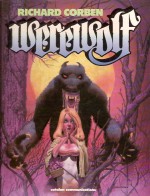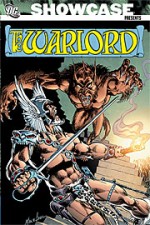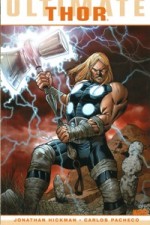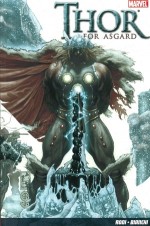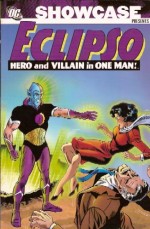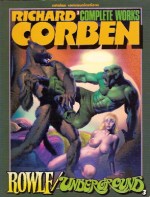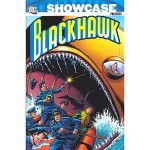
By anonymous, Dick Dillin & Chuck Cuidera (DC Comics)
ISBN: 978-1-4012-1983-3
The early days of the American comicbook industry were awash with both opportunity and talent and these factors also coincided with a vast population hungry for cheap entertainment. Comics had no acknowledged fans or collectors; only a large, transient market-place open to all varied aspects of yarn-spinning and tale-telling – a situation which maintained right up to the middle of the 1960s.
Thus, even though loudly isolationist and more than six months away from active inclusion in World War II, creators like Will Eisner and publishers like Everett M. (“Busyâ€) Arnold felt that Americans were ready for the themed anthology title Military Comics.
Nobody was ready for Blackhawk.
Military Comics #1 launched on May 30th 1941 (with an August cover-date) and included in its gritty, two-fisted line-up Death Patrol by Jack Cole, Miss America, Fred Guardineer’s Blue Tracer, X of the Underground, the Yankee Eagle, Q-Boat, Shot and Shell, Archie Atkins and Loops and Banks by “Bud Ernest†(actually aviation-nut and unsung comics genius Bob Powell), but none of the strips, not even Cole’s surreal and suicidal team of hell-bent fliers, had the instant cachet and sheer appeal of Eisner and Powell’s “Foreign Legion of the Air†led by the charismatic Dark Knight of the airways known only as Blackhawk.
Chuck Cuidera, already famed for creating the original Blue Beetle for Fox, drew ‘the Origin of Blackhawk’ for the first issue, wherein a lone pilot fighting the Nazi invasion of Poland in 1939 was shot down by Nazi Ace Von Tepp; only to rise bloody and unbowed from his plane’s wreckage to form the World’s greatest team of airborne fighting men…
This mysterious paramilitary squadron of unbeatable fliers, dedicated to crushing injustice and smashing the Axis war-machine, battled on all fronts during the war and stayed together to crush international crime, Communism and every threat to democracy from alien invaders to supernatural monsters, becoming one of the true milestones of the US industry. Eisner wrote the first four Blackhawk episodes before moving on and Cuidera stayed until issue #11 – although he triumphantly returned in later years.
There were many melodramatic touches that made the Blackhawks so memorable in the eyes of a wide-eyed populace of thrill-hungry kids. There was the cool, black leather uniforms and peaked caps. The unique, outrageous – but authentic – Grumman F5F-1 Skyrocket planes they flew from their secret island base and of course their eerie battle-cry “Hawkaaaaa!â€
But perhaps the oddest idiosyncrasy to modern readers was that they had their own song (would you be more comfortable if we started calling it an international anthem?) which Blackhawk, André, Stanislaus, Olaf, Chuck, Hendrickson and Chop-Chop would sing as they plummeted into battle (to see the music and lyrics check out the Blackhawk Archives edition); just remember this number was written for seven really tough leather-clad guys to sing while dodging bullets…
Quality adapted well to peacetime demands: Plastic Man and Doll Man lasted far longer than most Golden Age superhero titles, whilst the rest of the line adapted into tough-guy crime, war, western, horror and racy comedy titles. The Blackhawks soared to even greater heights, starring in their own movie serial in 1952. However the hostility of the marketplace to mature-targeted titles after the adoption of the self-censorious Comics Code was a clear sign of the times; as 1956 ended Arnold sold most of his comics properties and titles to National Publishing Periodicals (now DC) and set up as a general magazine publisher.
Many of the purchases were a huge boost to National’s portfolio, with titles such as GI Combat, Heart Throbs and Blackhawk lasting uninterrupted well into the 1970s (GI Combat survived until in 1987), whilst the unceasing draw and potential of characters such as Uncle Sam, the assorted Freedom Fighters costumed pantheon, Kid Eternity and Plastic Man have paid dividends ever since.
This commodious monochrome collection covers the first National-emblazoned issue (#108, January 1957) through #127 (August 1958) which saw the Air Aces hit the ground running in a monthly title (at a time when Superman and Batman were only published eight times a year) and almost instantly established themselves as a valuable draw in the DC firmament.
Regrettably many of the records are lost so scripter-credits are not available (potential candidates include Ed “France†Herron, Arnold Drake, George Kashdan, Jack Miller, Bill Woolfolk, Jack Schiff and/or Dave Wood) but the art remained in the capable hands of veteran illustrators Dick Dillin and Chuck Cuidera: a team who meshed so seamlessly that they often traded roles with few any the wiser…
Moreover although broadly formulaic the gritty cachet, crime and Sci Fi underpinnings and international jurisdiction of the team always allowed great internal variety within the tales, so with three complete adventures per issue, this terrific tome is a joyous celebration and compelling reminder of simpler yet more intriguing times.
The action begins with ‘The Threat From the Abyss’ an old-school “Commie-Stomper†yarn wherein the Magnificent Seven put paid to a sinister subsea Soviet rocket base, after which ‘Killer Shark’s Secret Weapon’ stuck with the watery theme as the Blackhawks’ greatest foe returned with another outrageous mechanical masterpiece to aid his piratical schemes. Issue #108 concludes with ‘The Mutiny of the Red Sailors’ wherein a mass-defection of Russian mariners in Hong Kong proved to be a cunning scheme to destroy the British Colony.
‘The Avalanche King’ detailed the struggle against Red infiltrators in South America, ‘Blackhawk the Sorcerer!’ saw the team discover a lost outpost of Norman knights who had missed the invasion of England in 1066 and ‘The Raid on Blackhawk Island’ pitted the squad against their own trophies as an intruder invaded their secret base and turned a host of captured super-weapons against them.
Blackhawk #110 opened with ‘The Mystery of Tigress Island’ as the doughty lads battled an all-girl team of rival international aviators, ‘The Prophet of Disaster’ proved to be not a seer but simply a middle Eastern conman and ‘Duel of Giants’ pitted the team against a deranged scientist who could enlarge his body to blockbuster proportions.
‘The Menace of the Machines’ found the heroes battling the incredible gimmicks of a Hollywood special effects wizard who had turned to crime, ‘The Perils of Blackie, the Wonder Bird’ featured the team’s incredible feathered mascot who cunningly turned the tables on the spy-ring which had captured him whilst ‘Trigger Craig’s Magic Carpet’ proved once again that Crime Does Not Pay but also that even ancient sorcery was no match for bold hearts and heavy machine-guns…
‘The Doomed Dogfight’ opened #112 as a Nazi ace schemed to rerun his WWII aerial duel against Blackhawk; criminal counterpart squadron ‘The Crimson Vultures’ proved to be no match for the Dark Knights and ‘The Eighth Blackhawk’ was nothing more than a dirty traitor… or was he?
‘The Volunteers of Doom’ found the team uncovering sabotage whilst testing dangerous super-weapons for the US Government and ‘The Saboteur of Blackhawk Island’ only appeared to be one of the valiant crew before ‘The Cellblock in the Sky’ found the heroes imprisoned by a disenchanted genius in floating cages – but not for long…
‘The Gladiators of Blackhawk Island’ saw a training exercise co-opted by criminals with deadly consequences whilst costumed criminal the Mole almost enslaved ‘20,000 Leagues Beneath the Earth’ and Blackie was transformed into a ravening and uncontrollable menace in ‘The Winged Goliath’.
In ‘The Tyrant’s Return’ a group of Nazi war criminals rallied sympathisers around a new Hitler, ‘Blackie Goes Wild’ saw the gifted raptor revert to savagery but still thwart a South American revolution whilst ‘The Creature of Blackhawk Island’ saw a extra-dimensional monster foolishly begin smashing through to our reality on the most heavily fortified military base on Earth…
As ‘The Prisoners of the Black Palace’ the old comrades crushed a criminal scheme to quartermaster the entire international underworld, Blackhawk became ‘The Human Torpedo’ to eradicate a sea-going gangster but ended up in contention with a race of mermen, and old Hendrickson became ‘The Outcast Blackhawk’ after failing his annual requalification exams…
Blackhawk #117 began with the team tackling what seemed to be a lost tribe of Vikings in ‘The Menace of the Dragon Boat’ before becoming the targets of a ruthless mastermind in ‘The Seven Little Blackhawks’ and battling a chilling criminal maniac in ‘The Fantastic Mr. Freeze’.
‘The Bandit with 1,000 Nets’ proved to be yet another audacious thief with a novel gimmick whereas the Pacific Ocean was the real enemy when an accident marooned ‘The Blackhawk Robinson Crusoes’ as they hunted the nefarious Sting Ray, before ‘The Human Clay Pigeons’ found the team helpless targets of international assassin and spymaster the Sniper.
A time-travel accident propelled the aviators back to the old West in ‘Blackhawk vs Chief Black Hawk’ and on their return Frenchman Andre inherited a fortune and became ‘The Playboy Blackhawk’ before being kicked off the team. However he was happily back for the all-out dinosaur action of ‘The Valley of the Monsters’…
‘The Challenge of the Wizard’ led in #120 as the crew tackled an ingenious stage magician whilst a well-meaning kid made plenty of trouble for them when he elected himself ‘The Junior Blackhawk!’ before the sinister Professor tricked the heroes into re-enacting ‘The Perils of Ulysses’ with deadly robotic monsters.
‘Secret Weapon of the Archer’ pitted the team against a fantastic attention-seeking costumed menace, whilst ‘The Jinxed Blackhawk’ found the team struggling against bad luck, superstition and a cunning criminal before ‘Siege in the Sahara’ saw them imitating Beau Geste whilst rescuing hijacked atomic weapons from bandit chieftain the Tiger…
‘The Movie that Backfired’ started out as a biopic but developed into a mystery when criminals began making murderous alterations to the script, ‘The Sky Kites’ found the squad battling aerial pirates The Ravens and ‘The Day the Blackhawks Died’ saw the deadly Cobra lay a lethal trap unaware that he was the prey not the predator…
Killer Shark returned to unsuccessfully assault ‘The Underseas Gold Fort’, more leftover Nazis resurfaced to solve a ‘Mystery on Top of the World’ that involved the location of the Reich’s stolen gold and Blackhawk became ‘The Human Rocket’ to thwart an alien invasion.
In issue #124, figures from history were robbing at will and even the Blackhawks were implicated but the ‘Thieves With a Thousand Faces’ proved to be far from supernatural whilst ‘The Beauty and the Blackhawks’ saw shy Chuck apparently bamboozled by a sultry siren whilst ‘The Mechanical Spies From Space’ attempted to establish an Earthly beachhead but were soundly defeated by the Magnificent Seven’s unique blend of human heroism and heavy ordnance.
‘The Secrets of the Blackhawk Time Capsule’ proved an irresistible temptation for scientific super-criminal the Schemer whilst ‘The Sunken Island!’ hid a lost Mongol civilisation in the throes of civil war and ‘The Super Blackhawk’ saw an atomic accident transform the group’s leader into a all-powerful metahuman… unfortunately it did the same for the Mole and his entire gang too…
‘The Secret of the Glass Fort’ revisited the idea as the entire team temporarily received superpowers to battle alien invaders whilst The Prisoner of Zenda provided the plot for ‘Hendrickson, King For a Day’ as the venerable Dutchman doubled for a missing monarch and ‘The Man Who Collected Blackhawks’ quickly learned to regret using his shrinking ray on the toughest crime-fighters in the World…
This stupendous selection climaxes with issue #127: starting with ‘Blackie – the Winged Sky Fighter’ wherein the formidable hawk rescued his human colleagues from an impossible death-trap, after which strongman Olaf took centre-stage as ‘The Show-Off Blackhawk’ when a showbiz career diverted his attention from the most important things in life and the manly monochrome marvels conclude when a criminal infiltrating the squad disguised as American member Chuck seemingly succeeds in killing the legendary leader in man ‘The Ghost of Blackhawk’.
These stories were produced at a pivotal moment in comics history: the last great outpouring of broadly human-scaled action-heroes in a marketplace increasingly filling up with gaudily clad wondermen and superwomen. The iconic blend of weary sophistication and glorious, juvenile bravado where a few good men with wits, firearms and a trusty animal companion could overcome all odds was fading in the light of spectacular scenarios and ubiquitous alien encounters.
For this precious moment though these rousing tales of the miracles that (extra) ordinary guys can accomplish are some of the early Silver Age’s finest moments. Terrific traditional all-ages entertainment and some of the best comics stories of their time, these tales are forgotten gems of their genre and I sincerely hope DC finds the time and money to continue the magic in further collections.
And so will you…
© 1957, 1958, 2008 DC Comics. All Rights Reserved.




